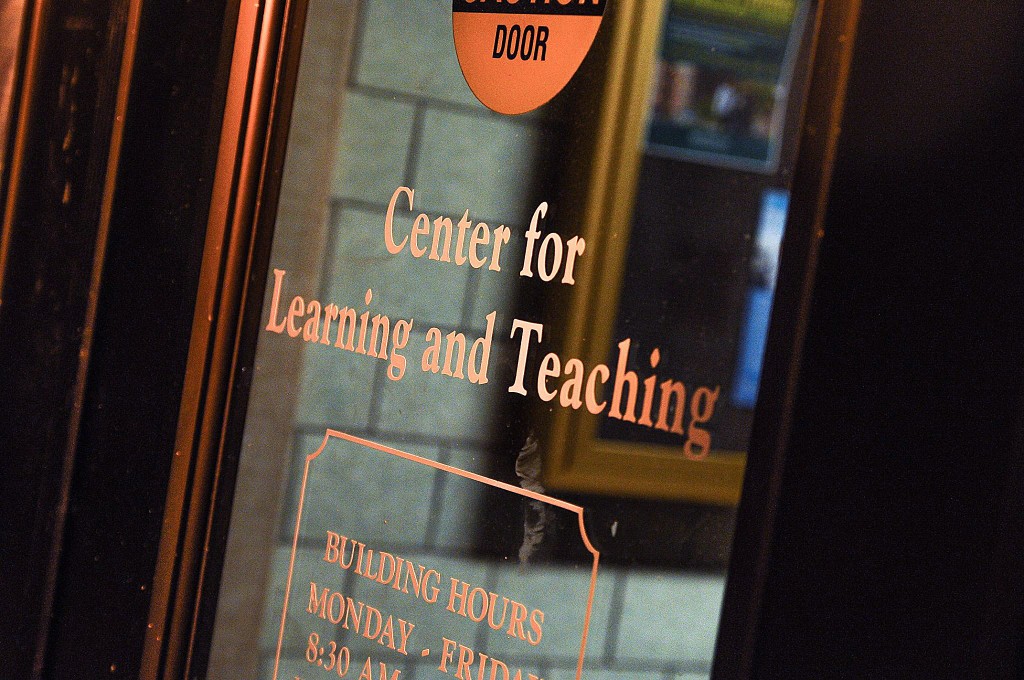
The expansions and additions happening at Binghamton University aren’t limited to building dorms and classrooms — the way students learn within those walls is also getting a makeover.
The new Center for Learning and Teaching (CLT) opened this semester in Library North. The CLT features the latest technology, dry-erase walls and workshops and seminars aimed at helping professors become better teachers.
Executive Vice President for Academic Affairs and Provost Donald Nieman said the CLT’s purpose is to be a catalyst for new approaches to teaching, improving the student learning experience.
“The driving force behind classroom design and experimentation [is] new learning technology,” Nieman said. “And a place that supports faculty members who wish to try new approaches in the classroom.”
The Center as an entity has existed for more than a decade, but according to Nieman, lacked the resources to make an impact. However, it has been given new life with investments from President Harvey Stenger’s “Road Map to Success” under Strategic Priority Two, which focuses on creating a “transformative learning environment” that prepares students for the real world.
Part of this reinvigoration was hiring mechanical engineering professor James Pitarresi as the executive director of the CLT, as well as a staff of “instructional designers” to work on teaching methods. Pitarresi said the Center was reworked to help keep BU’s professors in the know about the latest teaching methods and technological advancements in pedagogy.
“It can be overwhelming for instructors to stay abreast of new developments [in learning and teaching],” Pitarresi wrote in an email. “The CLT meets this need by providing information and support to our learning community on what works and how to best implement proven techniques and approaches in our courses.”
The CLT offers programs focused on implementing improved teaching methods. This includes working with University Tutoring Services (UTS), helping professors incorporate technology into the classroom and workshops teaching professors new methods of instruction.
One of these workshops offered to faculty is “flipped learning,” which is held in conjunction with the Graduate Student Organization. “Flipped learning” introduces the idea of lectures, usually held in class, being recorded as videos and assigned as homework, providing more time for hands-on projects in class.
“The ‘Flip Your Class’ workshops are my favorite,” Pitarresi wrote. “The instructors typically enjoy the hands-on interactive nature of the workshop and they quickly see the value of using it in their classroom.”
Working with UTS, the CLT monitors the demand for tutoring in a certain subject, which can lead to re-evaluating the course.
“This gives us an ‘early alert’ that we communicate with departments if we see a sudden demand for tutoring in a course or section,” Pitarresi wrote. “This can result in the instructor adjusting their course to improve student learning.”
The CLT has a classroom, called the “Learning Studio” which features projectors, screens, movable furniture and walls painted with a material that allows instructors, and students, to write on them. The CLT also works with businesses such as Pearson, Apple, Cisco and Pearson Publishing to stay abreast of new technological advances.
Nieman said the CLT is playing a fundamental role in the plans for the future of the University.
“Our Road Map strategic plan challenges us to provide students a ‘transformative learning community,’” Nieman said. “The CLT is a key resource that will help us better serve students and offer them a truly transformative learning experience.”


